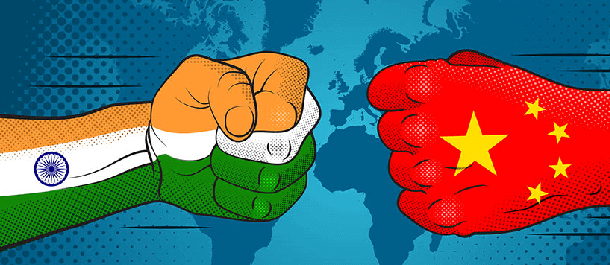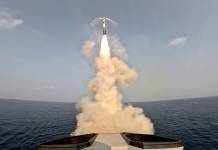With India entering the fifth month of the military stand-off with China in the ever-volatile Eastern Ladakh region, tensions have continued to escalate in the region with both nations’ armed forces stationed in the mountainous terrain for the long-winter haul, monitoring each other’s every step.
Added to the mix is the Taiwan equation which is bound to change the entire dynamic of the ties between the two nations that currently hang by a thread ahead of November’s dialogue between Prime Minister Narendra Modi and President Xi Jinping.
China, which considers Taiwan as part of its own territory, had issued a letter last week, ahead of Taiwan’s National Day on Saturday (October 10), to instruct Indian media to not refer to Taiwan as a country or its leader Tsai Ing-wen as its president.
However, the message instantly backfired with Indians hanging banners of Taiwanese flags outside the Chinese Embassy, and also flooding twitter with hashtags of #TaiwanNationalDay, before it became viral.
Namaste to all our brothers and sisters of #Taiwan…. Love from #India ?? to all of you…. We join you today in celebrating #HappyTaiwanNationalDay pic.twitter.com/dxa81kJqMD
— Abhishek Reddy (@Abhireddygouda) October 10, 2020
We all the people of india celebrating #TaiwanNationalDay@iingwen India loves Tiwan and India supports Tiwan.
?India- Taiwan friendshi long live ? pic.twitter.com/adiTtYd3V2— Suresh Sharma (@balesarasuresh) October 10, 2020
Responding to the outpour of love and support from Indians against the wishes of Beijing, Tsai tweeted,
“Thank you to all of our dear friends in India Flag of India for your well wishes on Flag of Taiwan #TaiwanNationalDay. Together, we can take pride in safeguarding our shared values like freedom & human rights, & defending our democratic way of life. #namaste”
Thank you to all of our dear friends in India ?? for your well wishes on ?? #TaiwanNationalDay. Together, we can take pride in safeguarding our shared values like freedom & human rights, & defending our democratic way of life. #namaste pic.twitter.com/ZZQT1286lR
— 蔡英文 Tsai Ing-wen (@iingwen) October 11, 2020
However, the move was not been taken kindly by China, who calls for the merger of the renegade province with the mainland.
One China Policy
For long, India has exercised the “One China Policy”, under which the country diplomatically acknowledges Beijing’s position of there being only one Chinese government, with regards to Taiwan.
With the One China Policy initiated between December 1949 and April 1950, India was among the first countries to use the word “One China” and recognise China along with Burma and Pakistan.
But the policy was only related to Taiwan for the initial period with the Communist Party going on to win the civil war, leading to the Kuomintang (Chinese Nationalist Party) being pushed back to Taiwan.
According to Srikanth Kondapalli, a professor in Chinese studies at Jawaharlal Nehru University (JNU), India was forced to switch over diplomatic relations from Taiwan to Beijing.
“India also had Consul Generals in Lhasa, Xinjiang, and other areas. Within two years, the Communist Party won the war and we had to switch over from diplomatic relations with ROC (Republic of China) to PRC (People’s Republic of China),”
With the advent of the PRC, the Communist party started setting up a different kitchen. All the diplomatic missions and relations were abolished and new relations were established.” said Kondapalli, while speaking at a brainstorming event between experts at the foundation of “Rethinking India’s ‘One China Policy’: Tragedy of Tibet”
While New Delhi has continued to maintain relations with Taipei, it has been hesitant on enhancing them due to Chinese pressure, and simply states Taiwan as an inalienable part of China to honour the policy.
However, while India has adhered to the policy so as to not deteriorate ties with the world’s second-biggest economy, the border flare-ups have resulted in a host of defence analysts, experts and diplomats urging New Delhi to play the “Taiwan Card” and enhance relations with Taiwan in a bid to send a clear signal to Beijing.
“India needs to take a firm stand on issues like Taiwan’s observer status in the World Health Assembly and step up trade and business ties with Taiwan. India should also look at diplomatic exchanges between Taipei and New Delhi. Like India, Taiwan is a proud democracy, but unlike India, it faces an existential threat from China given the power differential between China and Taiwan,”
India’s unquestioned respect for the ‘One China’ policy has met a dead-end in the brutality at Galwan and the events surrounding it. While closer coordination with the Quad nations (the US, Australia and Japan) is welcome and necessary, shedding the diffidence in taking on China is something India will have to do on its own.” according to an editorial in Times Now.

However, the word from China is that with the ongoing border stand-off, India should refrain from playing the Tibet Card, with Global Times, a daily newspaper under the auspices of Chinese Communist Party (CCP) stating that the actions will be equivalent to opposing China’s sovereignty.
“No government would allow other countries to make a fuss about its sovereignty. If Chinese media publicly support the insurgencies in Northeast India or publish content in favour of Indian pro-separatist forces, how will New Delhi react? India’s response won’t be milder than that of China. Shouldn’t the voices that provoke other countries’ sovereignty be opposed?” said Li Qingqing, writing for the Global Times.
Li said India has been looking to follow in the footsteps of the United States in picking the Taiwan Card, with Washington continuing to enhance military partnership with Taiwan against the wishes of China.
“Some Indian media outlets must be reminded that they don’t have the freedom to shake the one-China principle. India regards itself as a “proud democracy” and views China from the perspective of Western countries. As the China-US competition escalates, Washington has started to further manipulate the Taiwan card. Some people in India have also begun to follow Washington’s steps, trying to take advantage of it,”
New Delhi believes that it has won the support of the US and other Western countries. Thus, it has been ramping up provocation toward China, and even tried to challenge China’s bottom line. However, the US’ support is unreliable, while China’s counterattack is firm. India is playing with fire, and it will only be frustrated on both sides in the end.”
China Questions Ladakh
Experts talking to the EurAsian Times questions why New Delhi is hesitant to call Chinese bluff especially after Beijing said that it does not recognise Ladakhs Union Territory (UT) status granted by New Delhi.
The spokesman for China’s Foreign Ministry, Zhao Lijian, told the media that China opposes India building infrastructure in the region. He was responding to a question related to the 44 new bridges India has built near the LAC with China in Ladakh and Arunachal Pradesh, which were inaugurated recently.
“Based on consensus, neither should take actions along the border that might escalate the situation that is to avoid undermining the efforts by the two sides to ease the situation,” he added.
Blaming the Indian side for ramping up infrastructure development along the border he urged India to “earnestly implement our consensus and refrain from actions that might escalate the situation and take concrete measures to safeguard peace and tranquillity along the border.”





